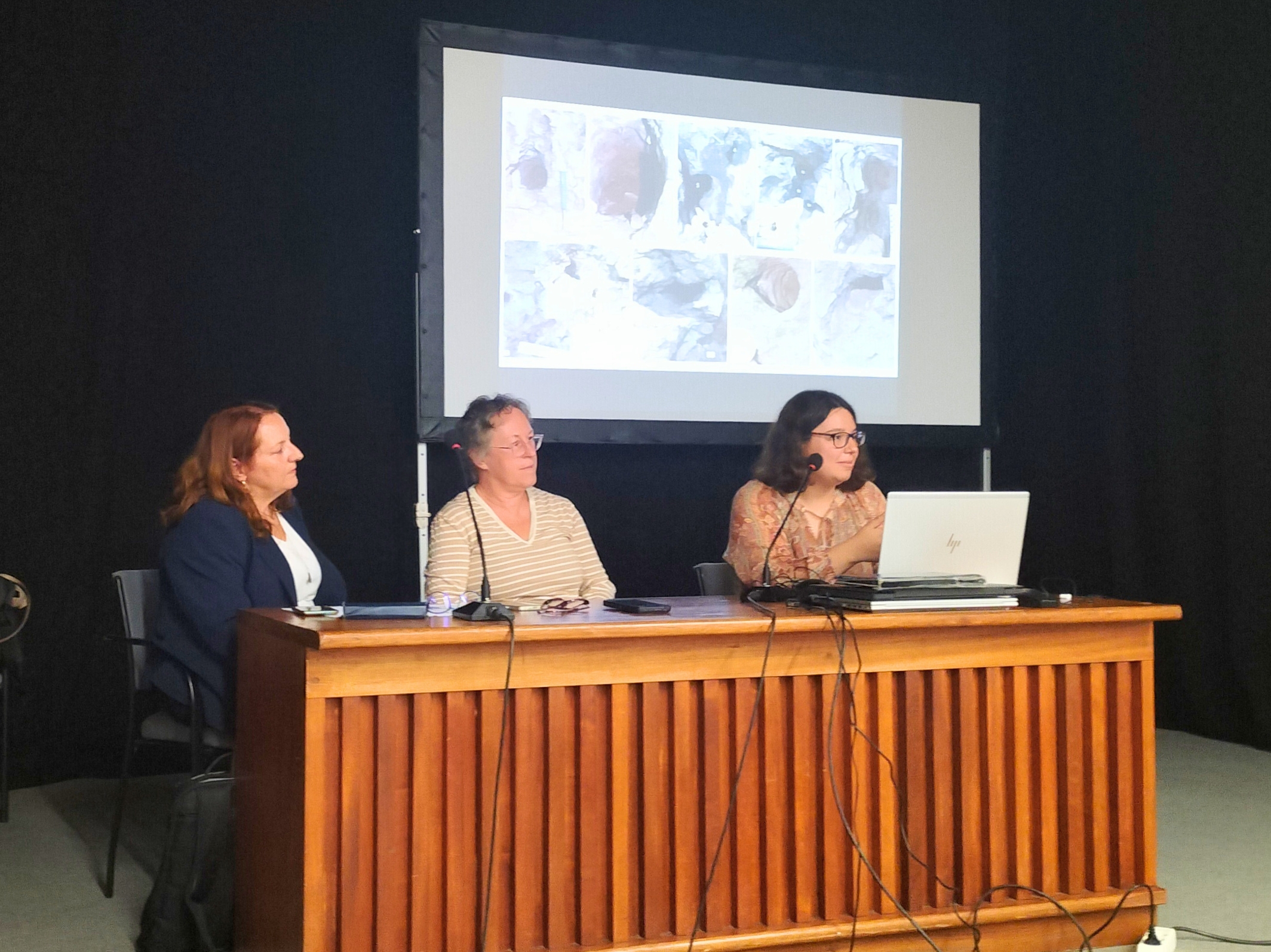The former convent of Santo Domingo hosts the public presentation of a plant fossil found in the heart of the city, as part of International Fossil Day
On Thursday 16 October, La Laguna City Council joined in the commemoration of International Fossil Day with an informative event open to the public, at which a paleontological find of great importance was presented: a plant fossil located on the San Roque mountain, next to the city’s historic quarter. The event took place in the Crystal Room of the former convent of Santo Domingo and brought together specialists, students and residents interested in La Laguna’s natural heritage.
The discovery was presented by Carolina Castillo Ruiz, professor of palaeontology at the University of La Laguna (ULL), together with geologist María Candelaria Martín Luis and PhD student María del Cristo Velasco Flores, who is writing her thesis on plant fossils in Tenerife. The discovery, recently presented at the FloraMac 2025 international conference and in collaboration with researcher Carlos Göis Marques (Madeira), represents one of the few fossil records of prehistoric vegetation in the urban environment of La Laguna.
The presentation was part of the Service Learning project ‘In the footsteps of the past: an interpretive route through the paleontological treasures of La Laguna’, a pioneering initiative coordinated by the ULL and involving secondary school students. The project is supported by the departments of Cultural Heritage, Rural Development, Local Development and the Environment of La Laguna City Council, as well as the Volunteer Office of the Tenerife Island Council, the Telesforo Bravo-Juan Coello Foundation and the Doctor Antonio González González Secondary School in Tejina.
During the event, images of the fossil were projected and informative posters on the municipality’s paleontological heritage were displayed, including references to extinct species such as the giant lizard of Tenerife. Attendees learned how fossil moulds, formed by volcanic sediments, provide valuable information about the vegetation landscape prior to colonisation, as well as about the volcanic and climatic dynamics of the region.
The event was also an opportunity to bring science closer to the community, promote environmental awareness and highlight the collaborative work between students, researchers and public entities, as well as to reinforce La Laguna’s commitment to the protection and dissemination of its natural heritage.



